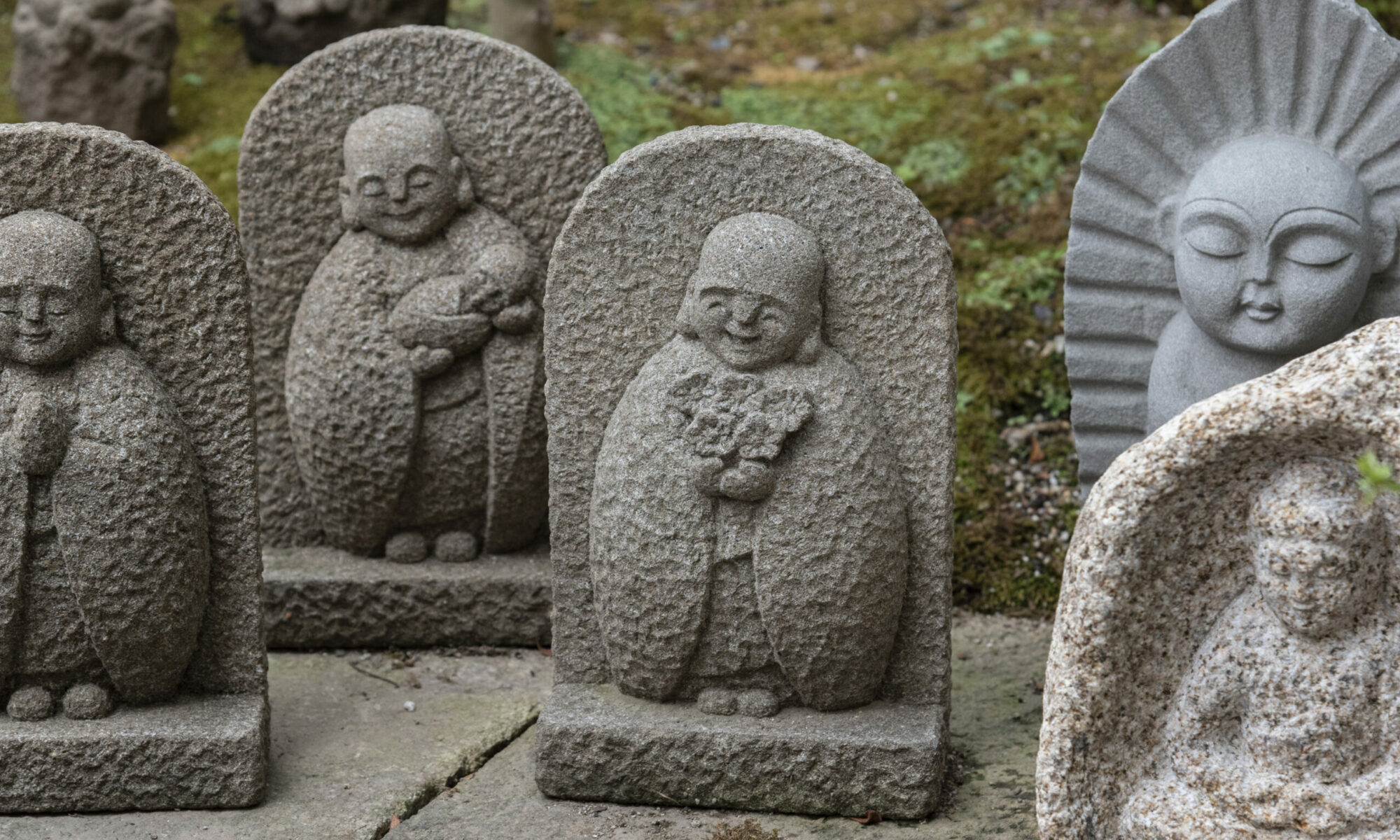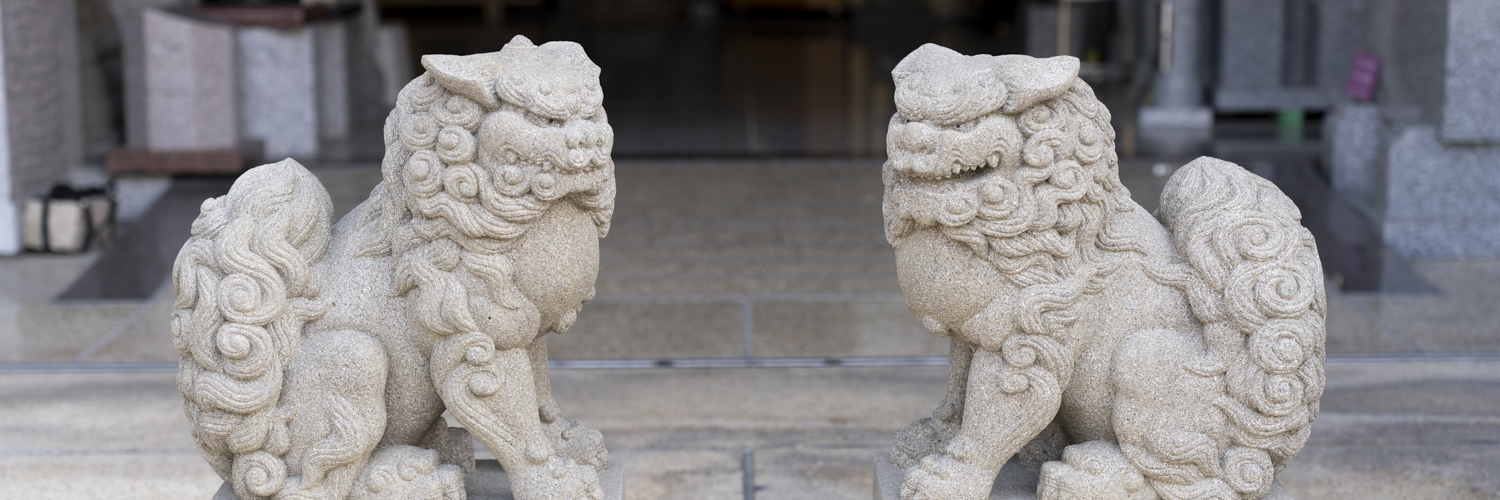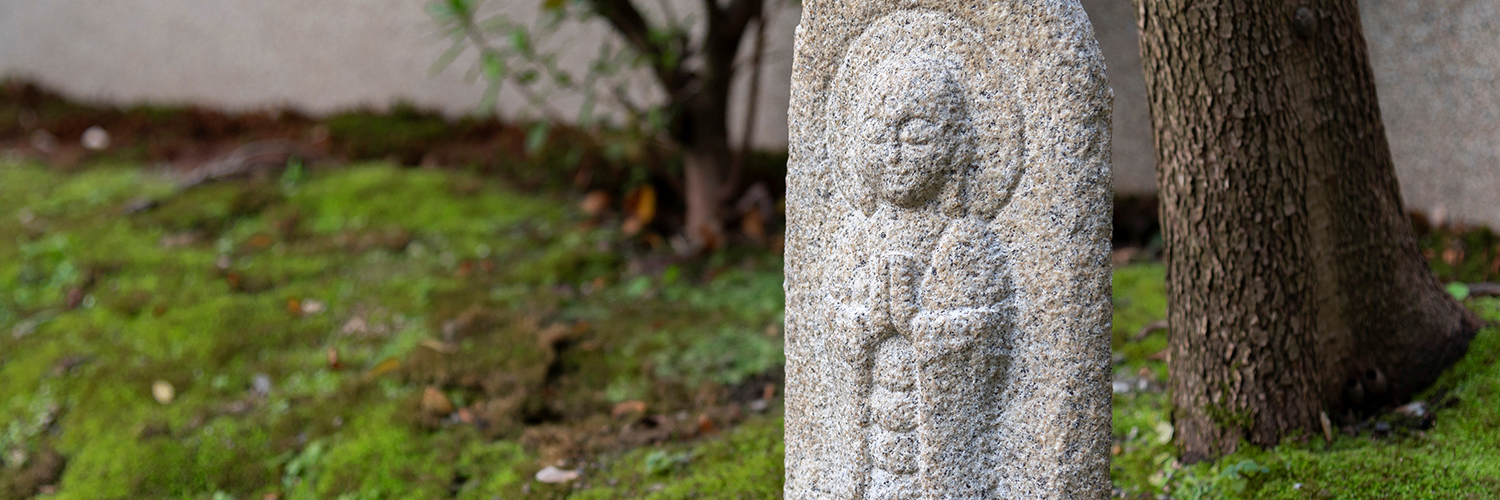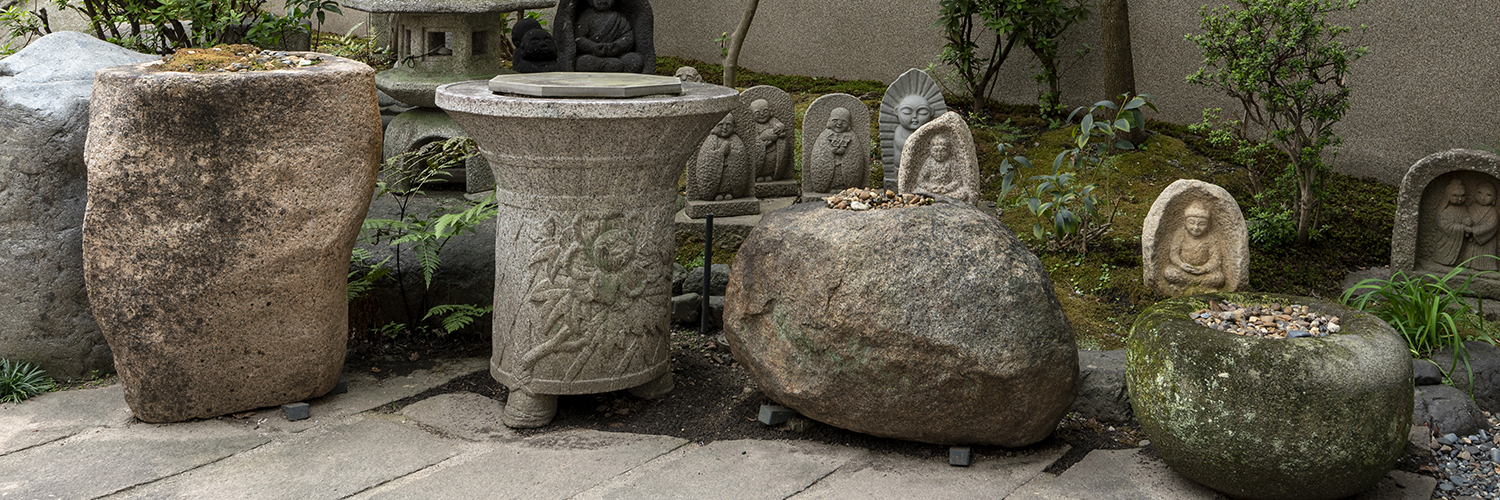In Japanese tradition, the northeast direction (Ushitora, or Ox and Tiger) is considered unlucky. It’s believed that demons, or evil spirits, enter and exit from this direction, making it an inauspicious one. The opposite direction, southwest (Hitsujisaru, or Sheep and Monkey), is also considered problematic and is called the ura-kimon. While often thought of as simply bringing bad luck, the northeast direction is actually believed to be a powerful force for change—for better or worse. Addressing this direction properly is said to bring unexpected positive results.
“Prayers for Peace: A Cornerstone Against Evil” の続きを読む安寧を願う習わし、鬼門除け角石
鬼門とは北東(丑寅)の方位のことです。日本の家相では、「鬼(邪気)が出入りする方角」として忌むべき方角とされています。また、反対の南西(未申)の方角を裏鬼門と言い、同じく忌み嫌われています。鬼門は単に凶を招く方角と思われがちですが、本来は非常にパワーがある方角と言われています。つまり、良くも悪くも、大きな変化を生む方位。鬼門をきちんと対処することで、思わぬ好転もあるようです。
“安寧を願う習わし、鬼門除け角石” の続きを読むHistory of Komainu
Komainu (狛犬), often referred to as lion-dogs in English, are paired statues of lion-like creatures traditionally placed at the entrances of shrines to serve as protectors. In today’s blog, we’ll explore the rich history and cultural significance of these majestic guardians.
“History of Komainu” の続きを読む狛犬の歴史
狛犬は英語で lion-dogs と呼ばれることが多く、伝統的に神社の入り口に置かれ、守護神として機能してきたライオンのような生き物の一対の像です。
今回のブログでは、これらの荘厳な守護神の豊かな歴史と文化的意義を探ります。
The Cultural and Religious Significance of Jizo Statues
In today’s blog, we’re diving deep into one of Japan’s most beloved and culturally significant figures: the Jizo statue. These humble, yet powerful figures have been a part of Japanese spiritual life for centuries, representing a unique blend of religious symbolism, cultural heritage, and even personal devotion. Let’s explore the layers of meaning and significance behind Jizo statues, and uncover some fascinating details that may surprise you.
“The Cultural and Religious Significance of Jizo Statues” の続きを読む地蔵像の文化的、宗教的意義
今回のブログでは、日本で最も愛され、文化的に重要である地蔵像について詳しく掘り下げます。
謙虚でありながら力強いこの像は、何世紀にもわたって日本の精神生活の一部であり、宗教的象徴、文化的遺産、さらには個人的な信仰を表しています。
地蔵像の背後にある意味と意義を探り、その魅力に迫ってみましょう。
Creating a Tranquil Japanese Atmosphere: Tsukubai
Japanese tea ceremony culture is rich in traditions that emphasize formality and etiquette. Among its essential elements is the ‘tsukubai.’ In today’s blog, we will explore the wonder and variety of tsukubai, which will deepen your appreciation for Japanese culture through its many forms.
“Creating a Tranquil Japanese Atmosphere: Tsukubai” の続きを読む静かな和の空間を演出する、蹲
日本の茶道には、形式や礼儀が重んじられる独自の文化が息づいています。
その中でも重要な役割を果たすのが「蹲(つくばい)」です。今回は、蹲の魅力とその種類についてご紹介します。
さまざまな蹲を通じて、日本の文化の奥深さを感じてみましょう。




